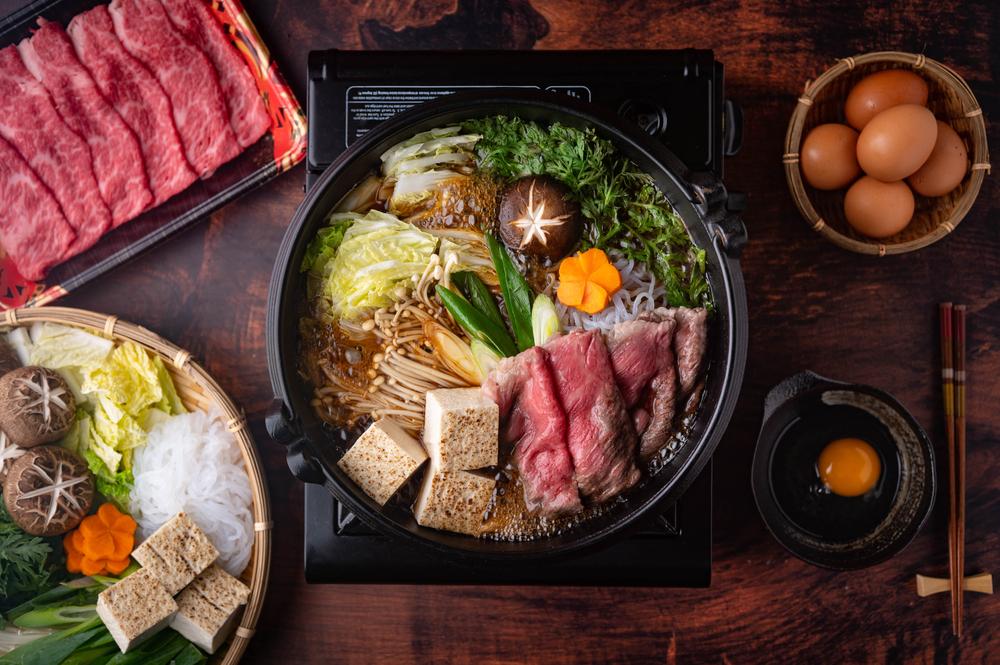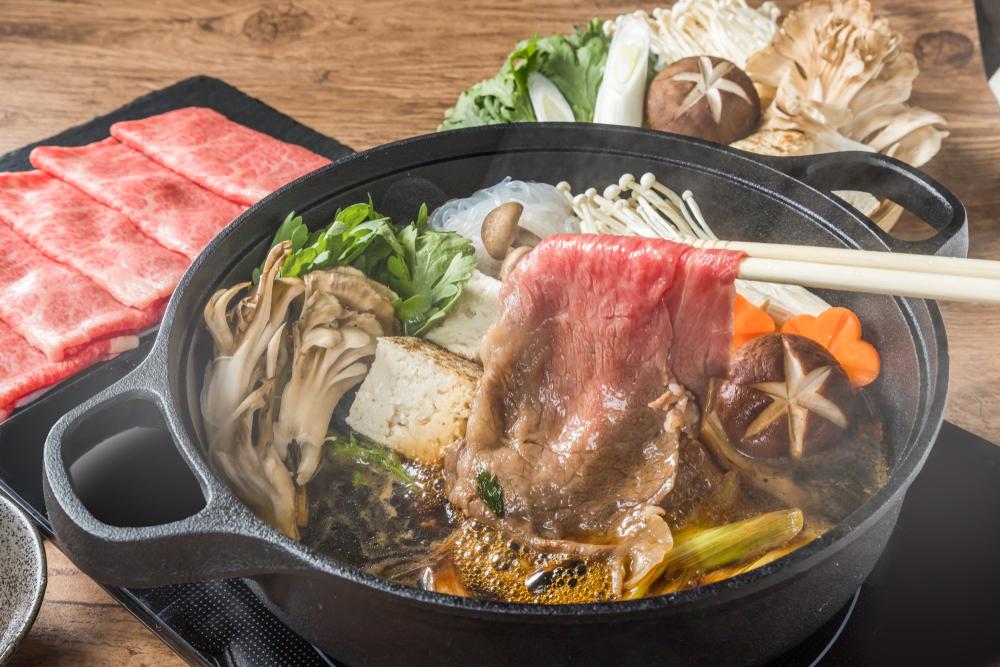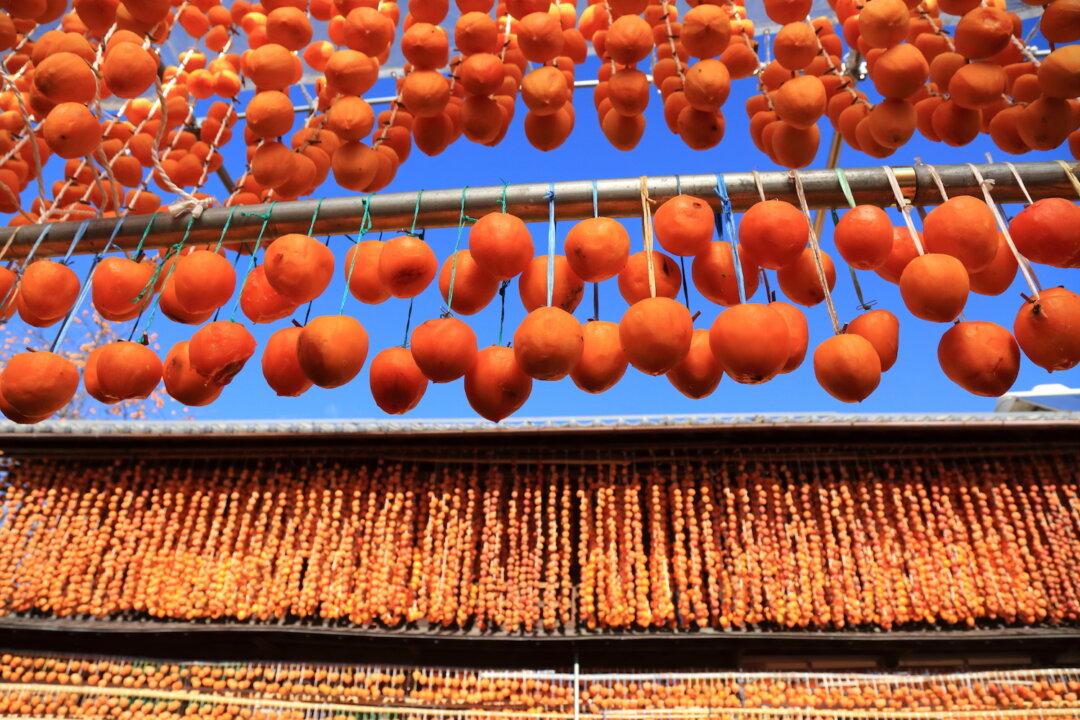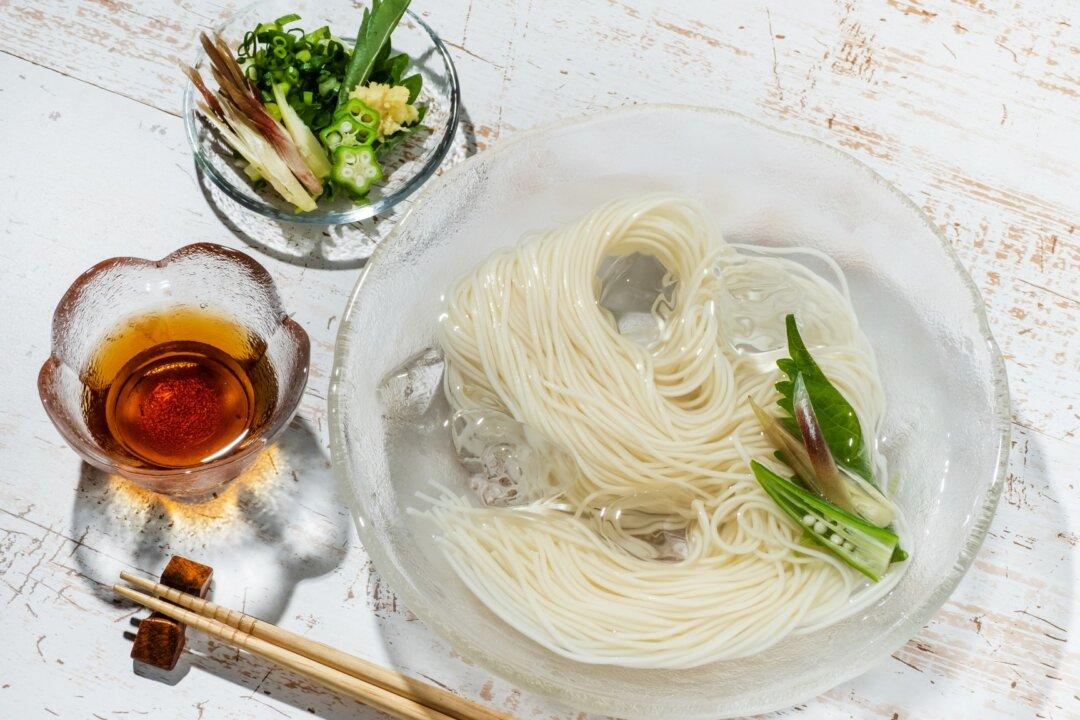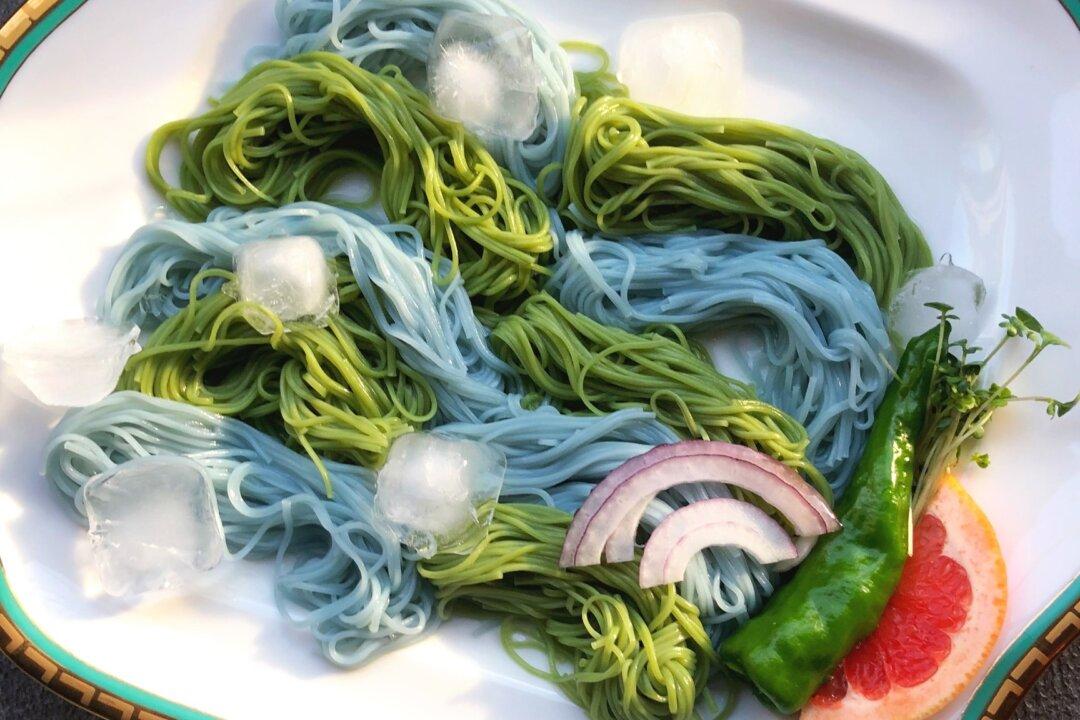Winters in Japan mean congregating around heat. We camp out under kotatsu, Japanese heated tables, and share all kinds of nabemono, hot one-pot dishes such as shabu-shabu, oden, or sukiyaki. Combining a medley of ingredients in a simmering broth, these Japanese hot pots are cooked at the table, to be enjoyed as a communal feast.
Sukiyaki, in particular, is seasonal party food—a staple on New Year’s tables, and all through the rest of winter.

